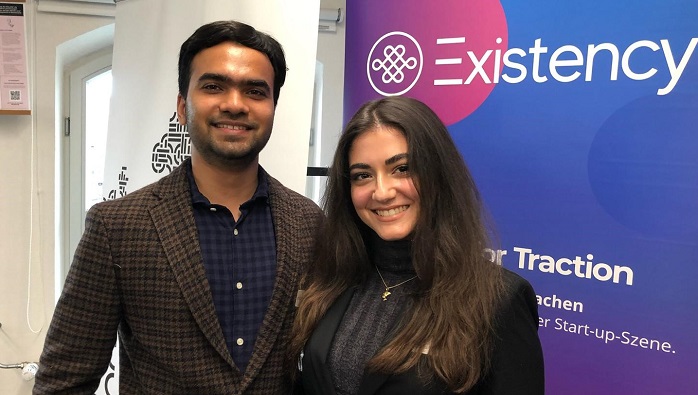Science with business sense
MAP students Lara Đelević and Akshat Sharma shared a passion for solving problems in human healthcare and while knowing that for science to become truly impactful, it must make business sense as well. Hence, they joined the Existency program, a highly selective startup incubator program of FAU Erlangen-Nürnberg and two other universities of applied sciences within the Metropolitan Region Nuremberg. Here, they learnt not only the basics of business, but also the process of ideating and original thinking. “The Existency pogram not only taught us the basics of entrepreneurship, but also the skills for ideation and problem-solving”, Akshat recalls. “And above all, we learnt to face our fears and develop trust in our ideas”, adds Lara.
As every year more than 2 million women globally get diagnosed with breast cancer, the two resourceful students of the Elite Graduate Program “Advanced Materials and Processes” decided to work on this problem. Many of them have to undergo not only painful tumor removal procedures, but also subsequent chemo- or radiotherapy. Lara and Akshat addressed a common problem during this following part of the medical treatment: inadequate fixing of the breast during radiotherapy. To tackle this, and to address the body-image concerns that women can feel while lying without a top cover, they came up with a customized 3D-printed medical bra made of materials that won’t interfere with radiotherapy – a simple innovation that could help with a major problem. Laura’s and Akshat’s idea also received recognition at the FAU Start Up Demo Day 2022, where they secured the second place.
It was from here that they decided to dig deeper into the field, and got in touch with physicians and professors to understand some of the problems they face during clinical practice. These interactions led to the idea of tissue-equivalent phantoms, the topic of their study research project.
In a second step, the duo started working at the University Hospital Erlangen in the Department of Radiology to develop tissue-equivalent phantoms for breast cancer. These are physical models that show similar behavior to radiation as the human breast. Hence, each time a new imaging modality (a different type of CT imaging) is used, its quality can be tested on this model rather than on humans. Moreover, such models can help in assessing the required radiation dose as well as in training young physicians for new therapies such as brachytherapy.
Overcoming limitations of current products
Most commercially available models are simple homogenous structures that fail to capture the complexity of the breast tissue. In reality, the breast is not just a single homogenous tissue, but is composed of fat, muscle and connective tissue, each of which interacts differently with radiation. Moreover, the relative composition of these three components changes across the thickness of the breast, and can vary considerably based on age and other physiological factors. It is this complexity that Lara and Akshat are trying to incorporate in their model. For this, they are using multi-material 3D printing after reconstructing a 3D model from the CT images.
Text: Lara Đelević und Akshat Sharma, Elite Graduate Program Advanced Materials and Processes


